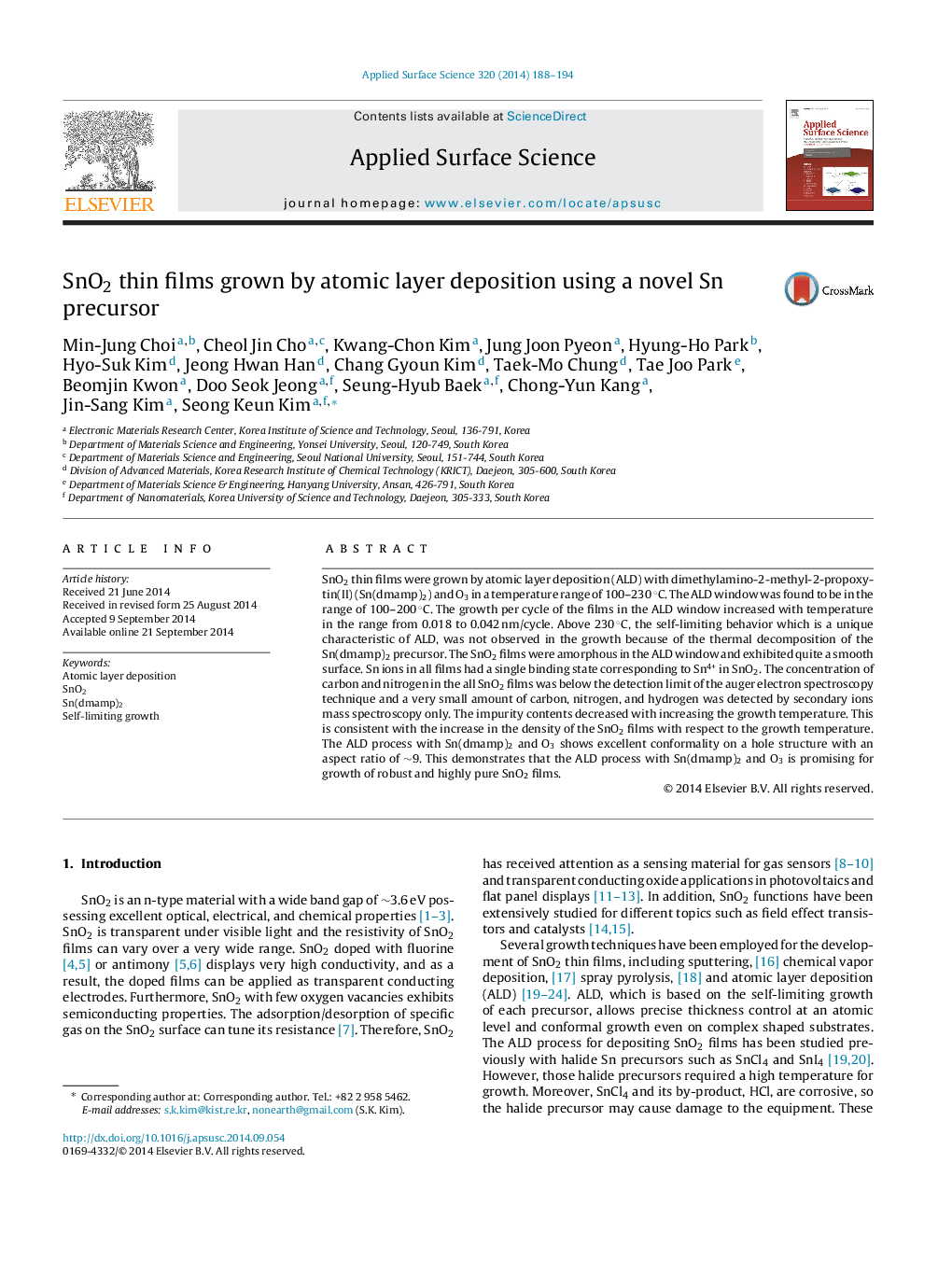| Article ID | Journal | Published Year | Pages | File Type |
|---|---|---|---|---|
| 5349613 | Applied Surface Science | 2014 | 7 Pages |
Abstract
SnO2 thin films were grown by atomic layer deposition (ALD) with dimethylamino-2-methyl-2-propoxy-tin(II) (Sn(dmamp)2) and O3 in a temperature range of 100-230 °C. The ALD window was found to be in the range of 100-200 °C. The growth per cycle of the films in the ALD window increased with temperature in the range from 0.018 to 0.042 nm/cycle. Above 230 °C, the self-limiting behavior which is a unique characteristic of ALD, was not observed in the growth because of the thermal decomposition of the Sn(dmamp)2 precursor. The SnO2 films were amorphous in the ALD window and exhibited quite a smooth surface. Sn ions in all films had a single binding state corresponding to Sn4+ in SnO2. The concentration of carbon and nitrogen in the all SnO2 films was below the detection limit of the auger electron spectroscopy technique and a very small amount of carbon, nitrogen, and hydrogen was detected by secondary ions mass spectroscopy only. The impurity contents decreased with increasing the growth temperature. This is consistent with the increase in the density of the SnO2 films with respect to the growth temperature. The ALD process with Sn(dmamp)2 and O3 shows excellent conformality on a hole structure with an aspect ratio of â¼9. This demonstrates that the ALD process with Sn(dmamp)2 and O3 is promising for growth of robust and highly pure SnO2 films.
Related Topics
Physical Sciences and Engineering
Chemistry
Physical and Theoretical Chemistry
Authors
Min-Jung Choi, Cheol Jin Cho, Kwang-Chon Kim, Jung Joon Pyeon, Hyung-Ho Park, Hyo-Suk Kim, Jeong Hwan Han, Chang Gyoun Kim, Taek-Mo Chung, Tae Joo Park, Beomjin Kwon, Doo Seok Jeong, Seung-Hyub Baek, Chong-Yun Kang, Jin-Sang Kim, Seong Keun Kim,
